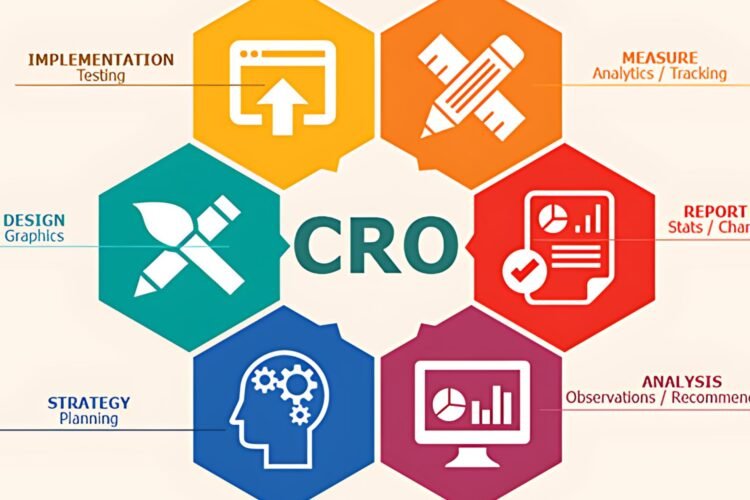
Understanding website traffic in today’s digital environment is of utmost importance for anyone hoping to create an online presence – business owners, marketers, and anyone seeking an impactful presence online alike; understanding all aspects of traffic could be the cornerstone of online success.
Web traffic measures how often visitors interact with websites, indicating their popularity, engagement, and overall success. Analyzing website traffic offers valuable insight into user behavior while uncovering trends and making data-driven decisions to expand online presence.
With this comprehensive guide, our goal is to simplify website traffic by offering practical strategies and advice for increasing online visibility and better engaging target audiences.
Understanding Different Kinds of Web Traffic:
Different categories of website traffic offer insight and growth potential; each has unique benefits and lessons that should be familiarized with. Here are the main types of traffic you should become acquainted with:
Organic Traffic: Organic traffic refers to visitors who find your website through search engines like Google or Bing without incurring additional expenses such as pay-per-click ads (PPC campaigns). Employing SEO techniques can significantly boost organic traffic growth.
Referral Traffic: Referral traffic refers to any external source that links back to your website, such as websites, social media platforms, or publications. A strong referral network can build credibility while drawing targeted visitors directly to your website.
Direct Traffic: Direct visitors refer to site visitors who type your URL directly into their browser or bookmark it directly – an indicator of solid brand recognition within your target market.
Social Media Traffic: Regarding website visits generated through platforms like Facebook, Instagram, Twitter, and LinkedIn, “social media traffic” refers to visits generated from such platforms. By creating engaging content for these platforms and forming influencer partnerships or running targeted ads, you can attract significant numbers of visitors to your site via these social platforms.
Paid Traffic: Paid traffic can be generated through online advertising campaigns such as pay-per-click (PPC), social media ads, and display ads, which provide targeted and cost-effective exposure for specific audiences.
Email Traffic: Email traffic refers to visitors arriving through email marketing campaigns, such as sending newsletters or promotions through emails.
Why Measuring Web Traffic Is Crucial
Measuring website traffic is essential to showing its reach; more visitors equals more potential audience reach and a broader online presence.
Web traffic provides valuable insight into user behavior. By analyzing traffic patterns, you can better understand user preferences, identify popular content, and optimize your website accordingly ultimately helping provide an enhanced user experience and meet visitors’ needs more efficiently.
More importantly, website traffic can enhance engagement and conversions. Whether your goal is to generate leads, generate sales, or build community, higher web traffic increases your odds of accomplishing all three simultaneously.
Web traffic can have an immediate and tangible effect on your brand’s reputation and credibility. Attracting many visitors demonstrates trust from users, further reinforcing its image.
Strategies To Boost Web Traffic
Content Marketing: Create keyword-rich and engaging content that offers value to your target audience. Blog posts, articles, infographics, and videos can increase organic traffic while building trust between visitors and your website.
Optimize Your Site With Search Engine Optimization:
- Boost your website’s search engine ranking by employing relevant keywords, meta tags, and structured data.
- Pay special attention to technical SEO techniques so that your site is crawlable and indexable.
- In addition, create a strong backlink profile through link-building strategies.
Engaging on Social Media:
- Build an active presence on relevant social media platforms that connect with your target audience.
- Post compelling content that engages followers.
- Use influencer marketing techniques to expand reach.
Paid Advertising: Use pay-per-click (PPC) ads to reach specific audiences quickly and precisely on search engines and social media. This will quickly increase traffic while targeting specific market niches with pinpoint accuracy.
Email Marketing

Increase your email list and send regular newsletters or promotions that drive visitors to your website. Incentivize clicks with exclusive content, discounts, or other offers designed to increase visits and engagement.
Collaboration and Guest Posting: Partner with influencers or industry websites to cross-promote or guest post your content in front of new audiences. This approach could drive backlinks to your website while increasing referral traffic. It could also bring exposure and leads directly back to you!
Analyze and Adapt: Utilizing tools like Google Analytics, regularly assess web traffic data to detect trends, understand user behaviors, and adapt strategies as necessary. This iterative process ensures your tactics stay effective and up-to-date.
Generating web traffic is crucial, but we must also attract quality visitors to do it efficiently. Low-quality visitors can hinder analytics, waste resources, and damage your brand; here is how you can avoid them:
Avoid Black Hat Techniques: Avoid unethical practices such as keyword stuffing, cloaking, and using private blog networks (PBNs) to artificially increase rankings. These may provide short-term gains but could ultimately incur penalties from search engines.
Target Your Audience: Once you understand your target audience, create content that resonates with them. Engaging visitors who genuinely desire what you offer ensures greater engagement and conversion rates.
Prioritize Quality Over Quantity: Strive to attract engaged visitors rather than simply increasing traffic numbers; targeting smaller audiences may often prove more productive.
Monitor Your Traffic Sources: Regularly review your traffic sources to make sure most of your visitors come from credible and pertinent websites or platforms. If there’s an increase in low-quality visitors, adjust your marketing strategies as necessary.
Conclusion: Harnessing the Power of Web Traffic
Capturing and harnessing web traffic’s potential is central to digital success. Following the strategies outlined here, you can increase your online presence, more effectively engage target audiences, and drive meaningful traffic to your website.
Remember that web traffic is ever-evolving, requiring adaptability and flexibility from us all. Continue evaluating, optimizing, and refining your approaches to ensure long-term success. An in-depth knowledge of web traffic combined with an emphasis on providing value will propel your online ventures toward greatness!


